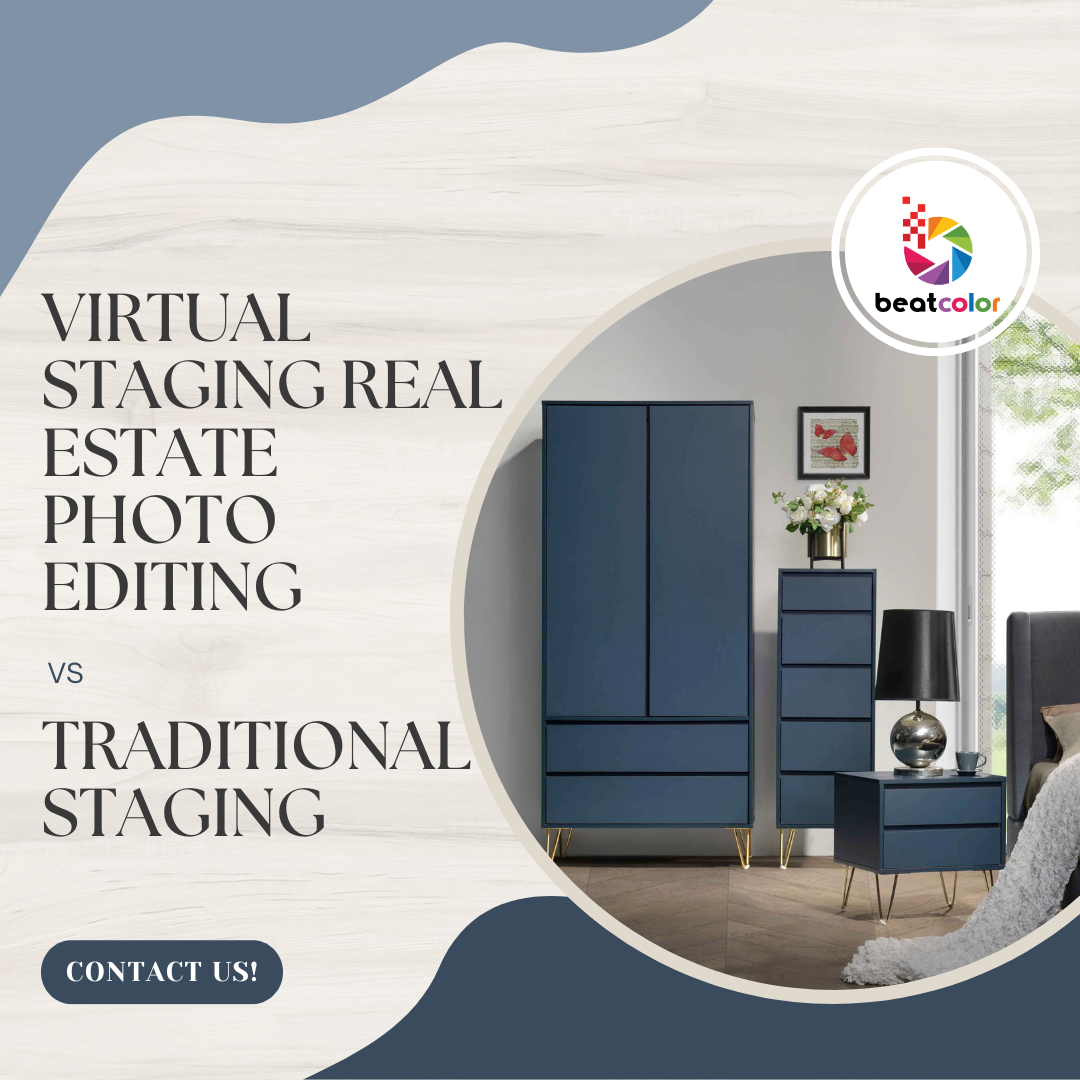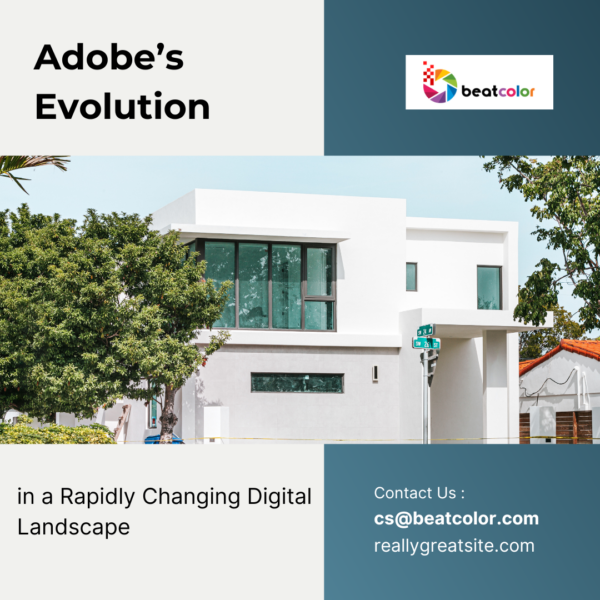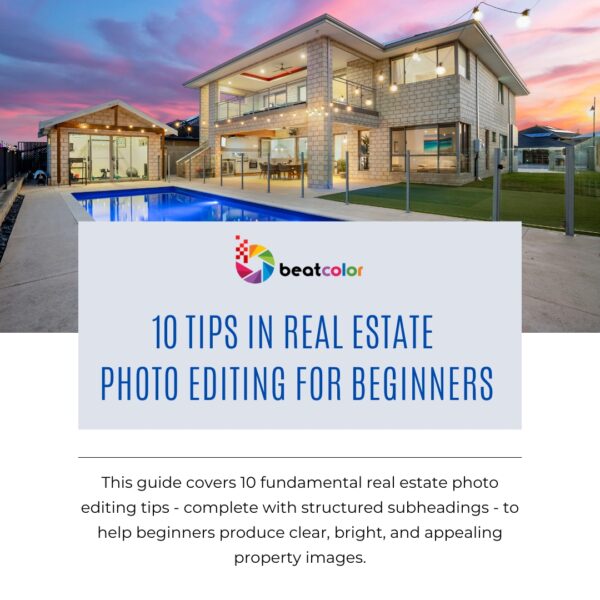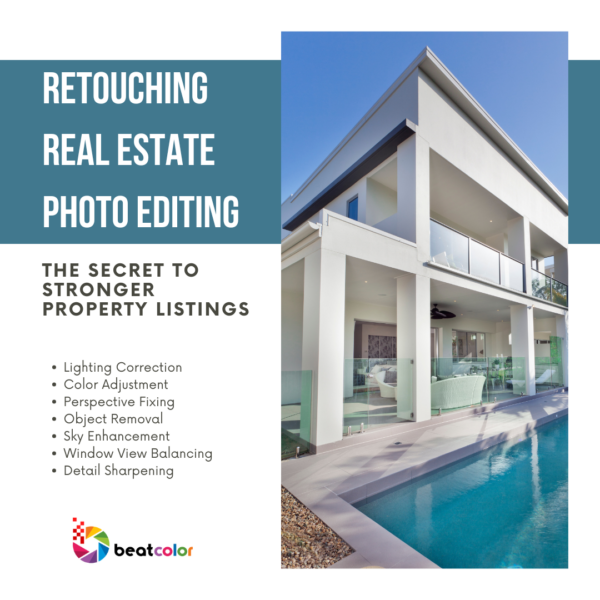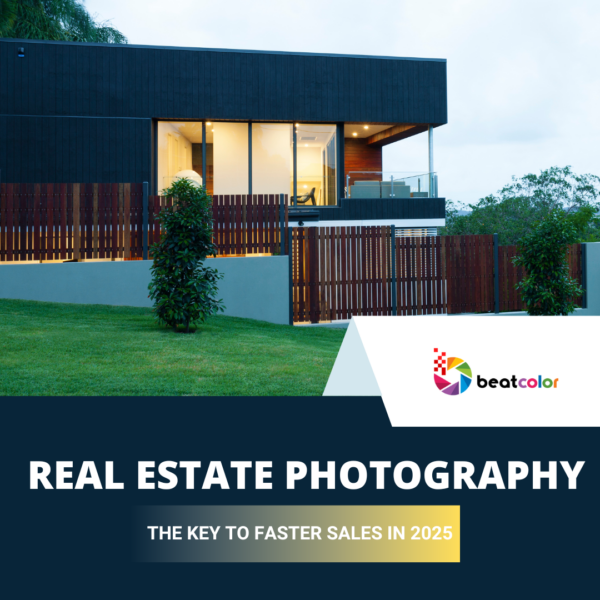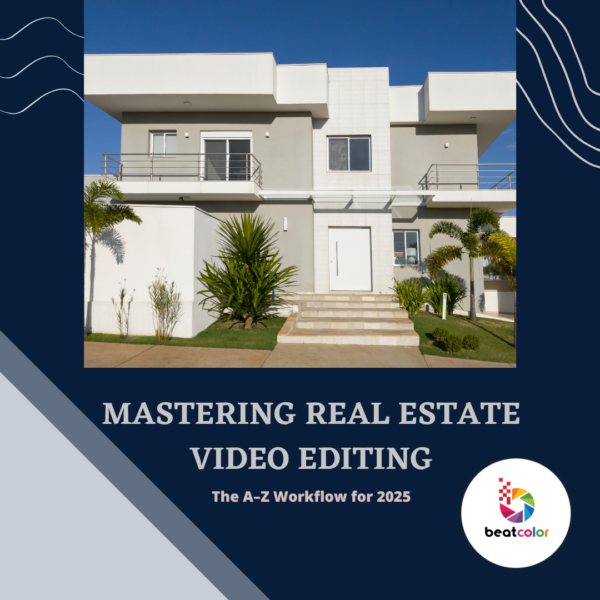Virtual Staging Real Estate Photo Editing vs. Traditional Staging: Which Wins in 2025?
Imagine standing in an empty living room. White walls, bare floors, and a faint echo. Now picture that same room dressed with a sleek sofa, warm lighting, and art on the walls. That transformation is staging, and in 2025, it comes in two flavors: virtual staging real estate photo editing and traditional staging.
Both aim to sell homes faster and at a higher price. The difference lies in cost, speed, and buyer experience. Let’s explore what’s changed this year and which method gives you the bigger win.
The Cost Equation
Money talks, especially in real estate marketing.
Virtual staging can cost as little as $24 to $100 per image, depending on the supplier and level of sophistication. AI-assisted platforms have made it even cheaper, with some edits completed for under $20.
In contrast, traditional staging costs between $1,500 and $5,000 each house, including continuous furniture rental expenses. High-end properties often see staging bills reaching $10,000 or more.
In pure numbers, virtual staging is up to 97% less expensive. For budget-conscious agents or sellers, that’s hard to ignore.
Speed to Market
In a competitive housing market, time kills deals.
Virtual staging wins here without contest. A skilled editor can deliver photo-ready results in 24–48 hours, and AI tools can turn an empty room into a fully furnished space in under a minute.
Traditional staging moves slower. Coordinating furniture rental, delivery, and setup can take one to two weeks, sometimes longer if scheduling conflicts arise.
Speed is not only desirable, but also essential in the fast-paced listings environment of 2025.
Impact on Buyers
Here’s where the two methods feel different.
Virtual staging real estate photo editing creates an idealized vision buyers first see online. According to a recent industry report, homes with virtual staging attract up to 75% more views than empty listings.
Traditional staging, however, works its magic in person. Buyers walk in and instantly feel at home, sitting on the sofa or imagining dinner at the dining table. That physical connection can be powerful, especially for luxury homes where presentation is part of the brand.
Return on Investment
Numbers tell another story.
Depending on the market and property price, virtual staging can yield a return on investment (ROI) of 500% to over 3,000%.Lower costs mean even modest price gains translate into impressive returns.
Traditional staging delivers ROI too—often 102% to 900%, but higher upfront expenses mean the profit margin narrows unless the property commands a premium sale price.
The takeaway? For mid-range properties, virtual staging often produces the better financial outcome. For luxury listings, traditional staging can still justify its higher investment.
Flexibility in Style
Virtual staging isn’t limited by what a furniture rental warehouse has in stock.
One image can be styled in multiple ways—modern minimalism, coastal charm, or industrial chic, without moving a single chair. In fact, some 2025 platforms let buyers toggle between styles in an interactive listing, creating a personalized shopping experience.
Traditional staging is more fixed. Changing styles mid-campaign means physically swapping furniture, which costs money and time. In that sense, virtual staging offers far more creative agility.
Environmental Considerations
Sustainability is no longer a side conversation.
Virtual staging has a significantly lower carbon footprint than hauling furniture to and from properties. Fewer trucks, less packaging, and no discarded decor.
Traditional staging still requires transport, energy, and storage. While some companies now use recycled materials or electric delivery vans, the process remains more resource-heavy than digital alternatives.
Challenges to Watch
Virtual staging isn’t without risks.
If buyers arrive expecting a fully furnished space and see an empty room, disappointment can set in. Transparency is the answer; either add a remark in the listing or provide both the staged and unstaged versions of every picture.
Traditional staging has its own pitfalls: damage to property during setup, scheduling conflicts, and higher carrying costs if the home doesn’t sell quickly.
The 2025 Hybrid Approach
Here’s what more agents are doing in 2025: combining both.
They use virtual staging to launch the listing online quickly, capturing attention during the critical first week. Then, for serious buyers or higher-end showings, they bring in physical staging to seal the deal.
This hybrid model takes advantage of the speed and cost-efficiency of virtual staging while keeping the emotional impact of traditional staging.
Final Thoughts
So, which wins—virtual staging real estate photo editing, or traditional staging?
The answer depends on your property, market, and goals.
- Need speed, budget control, and creative variety? Virtual staging takes the prize.
- Selling high-end, lifestyle-driven properties? Traditional staging still holds a strong edge.
- Want the best of both? Combine them for a targeted, cost-effective strategy.
In 2025, staging—virtual, traditional, or both—is no longer optional. It’s a core part of how homes sell. The question isn’t if you should stage; it’s how to wow!
Read more:
Why High Quality Real Estate Photos are Crucial
How to Choose a Photo Editing Service: A 2025 Guide
Real Estate Photo Editing Fails: What to Watch Out For


